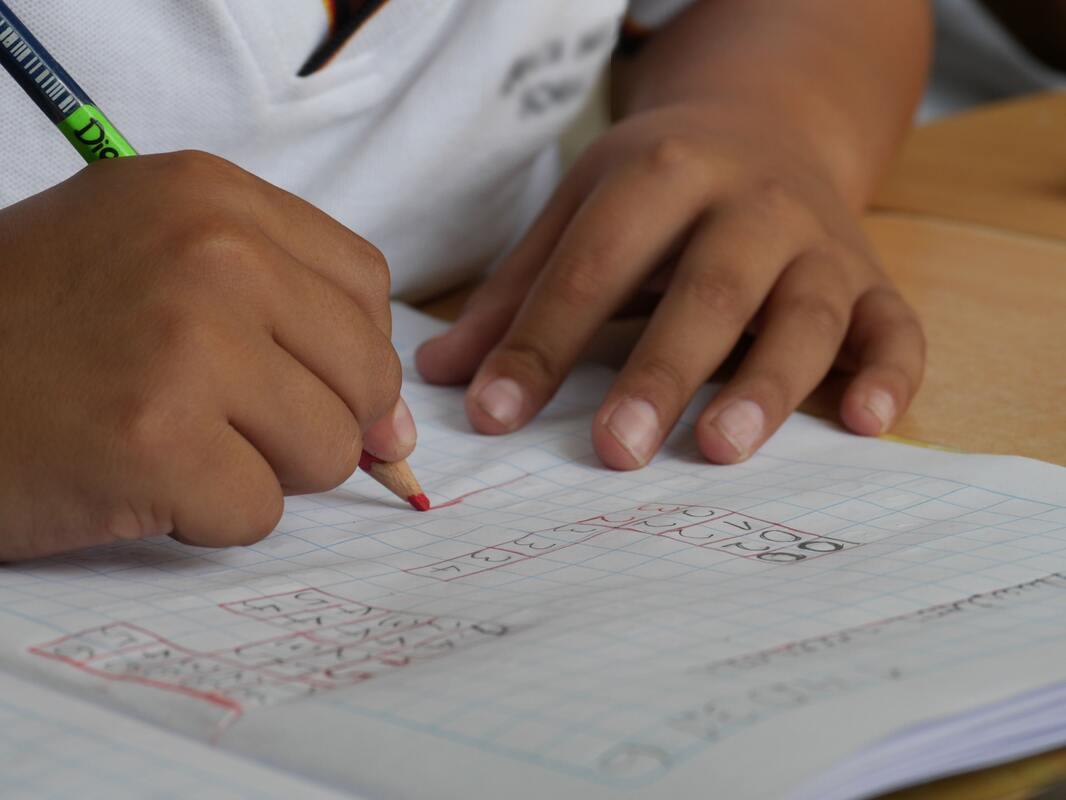Math projects for students are a great way to get kids interested in math. They can be used to teach new concepts, review old ones, or just provide some fun and engaging math practice. There are tons of great math projects out there, but we’ve compiled a list of fifteen easy and engaging math projects for elementary school students—the best of the best!
Math & ELA | PreK To Grade 5
Kids see fun.
You see real learning outcomes.
Watch your kids fall in love with math & reading through our scientifically designed curriculum.
Parents, try for free Teachers, use for free
Super Easy and Super Fun Math Project Ideas for Grade 1 Students
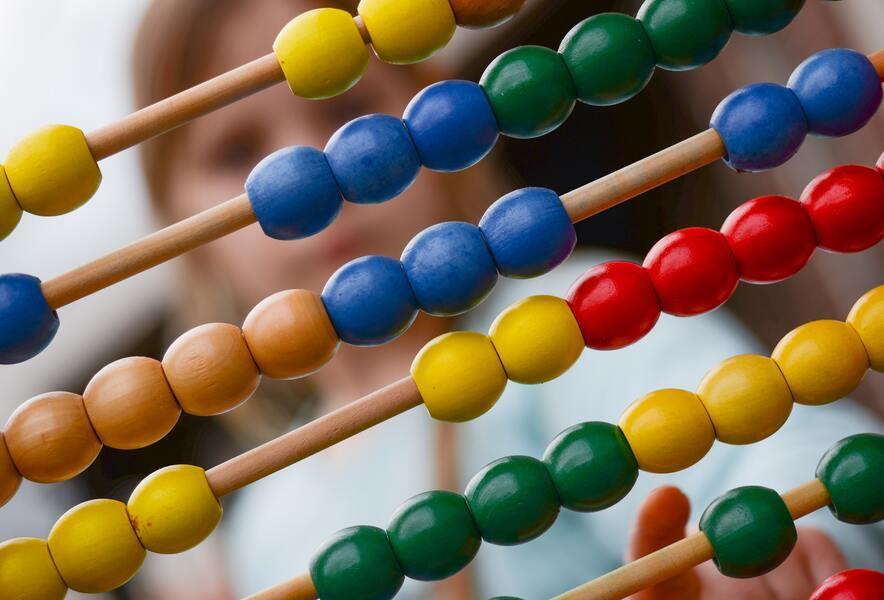
1. Scoop and Cone Matching Game
What you need:
- Cones and scoops made from felt or cardstock
- Marker or sketch pens
Description:
Write a number on the cone. Write different combinations of addition and subtraction equations to represent the number on the scoop.
Students have to solve the equations and match the correct scoop to the cone.
Skills Learned:
Addition, subtraction, and the concept of equations
Related Reading: New Math Tips & Strategies to Improve Kids’ Problems-Solving Skills
2. More or Less Dot Games
What you need:
- Ten frame cards
- A set of dots (or colorful buttons or plastic corks to use as dots)
- A deck of cards
Description:
Give a student a card and add some dots to it. Ask them, “How many dots are there on the card?” Once students master this, you may ask them, “What number is one more/one less?” You can also give them two cards and ask which one has more or less dots.
For two or more students, card games are a gold mine! Take a deck of cards. Snip off their corners with numerals written on them. Place the cards with their face downward. Ask each student to turn up a card. Ask them to tell whose card is “more” or “less.” Each correct answer wins them a point!
Skills Learned:
Visualizing numbers, understanding the concept of more or less, comparing numbers, addition, and subtraction
3. Shape Graphs
What you need:
- Different geometric shapes in different colors and sizes
- Graph papers with large rows and columns (with rows mentioning shape names and columns mentioning numbers)
- Some crayons
Description:
Distribute some graph paper among the children. Spread out some shapes in front of them. They have to find out how many shapes of each type there are and color that many boxes of relevant columns.
Skills Learned:
Recognition of geometric shapes by their names, and understanding and representing data in pictorial form
Exploratory Ideas for Math Projects for Grade 2 Students
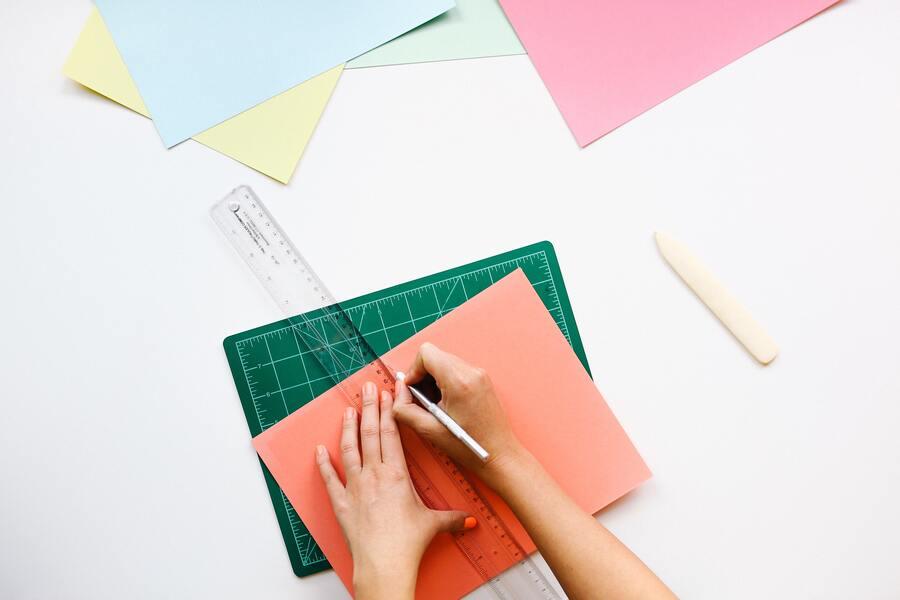
4. Elementary Architects
What you need:
- Instructions and photos of room designing projects
- 2-page student project sheet to promote reading in math
- Note-taking forms
- Sample blueprints for reference
- Brainstorming sheet
- Grid paper templates
Description:
Ask the students to design their rooms, calculate areas, and estimate flooring needs by reading the instructions, looking at the photos, and taking notes.
Students love to play architects. Allow them sufficient room for being creative to promote their spatial awareness.
Skills Learned:
Reading comprehension, estimation, area, and perimeter calculation
5. M&M’s Math Game
What you need:
- A box of colorful m&m’s
- Graph papers for kids
- Crayons
Description:
Let your students dig into the box of m&m’s and take a few each. They have to count how many m&m’s of each color they got. If they count m&m’s of each color correctly, they can eat them! Otherwise, they have to return the m&m’s to the box and try again!
As they master their skills, you can take this math game to the next level. They can make a graph using graph paper and crayons! You may have to help them label the graph and the graphing part itself.
Skills Learned:
Counting, addition, making graphs
Related Reading: Best Classroom Math Games That Will Make Your Students Excited for Math Class
6. Hit a Home Run for Math Fact Fluency
What you need:
- DIY baseball game board with math facts
- Two dice
- Number cards
- Counters to use as baseball players—9 for each team
Description:
Write the numbers 1 to 9 in one row and 0 in the next row to make a baseball diamond.
Help your students write math facts such as doubles (2 + 2, 3 + 3, etc.), near doubles (9 + 8), addition/subtraction of 10 (8 + 2, 5 + 5), and related subtraction facts (7 – 3, 9 – 6) on the number cards.
To play, have each student roll two dice. They get to move one of their baseball players the number of spaces corresponding to the first die and then answer the math fact that corresponds to the number they landed on. If they answer correctly, they get to roll again. The first player to get three of their baseball players “home” wins!
Skills Learned:
Math facts fluency, addition, subtraction
Project-Based Learning Math Ideas for Grade 3 Students
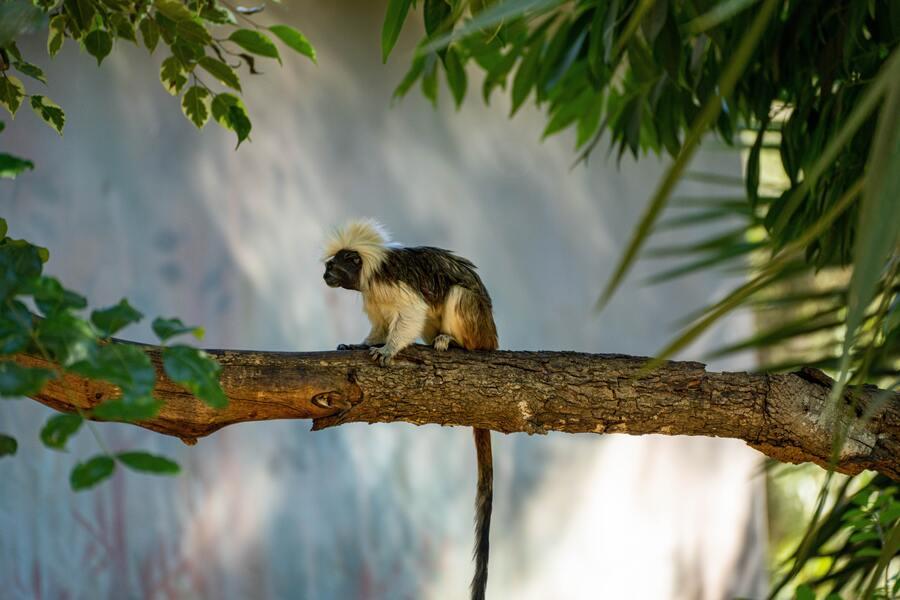
7. Place Value in the Wild Math Project
What you need:
- Digital and printable version of a student guide with detailed instructions and visuals
- Student printables or digital recording sheets guiding students on how to select a habitat, research animals of that habitat, note sizes and lifespans of these animals, etc.
Description:
As third graders research animals as expedition scouts for Wildlife Explorers International, they learn about place values through various activities, such as representing numbers in different ways, comparing numbers, and estimating lengths, heights, and lifespans of animals.
You can ask students to use standard numbers, expanded forms, and word forms of numbers. They may also be introduced to decimals through this project.
Skills Learned:
Place value, estimation, decimals
8. The Time of Your Life
What you need:
- A printable or digital student guide with detailed instructions, visuals, and student printables
- Analog and digital clocks (one per student pair)
Description:
In this project, students learn to read the time on both analog and digital clocks. They also practice setting the time on these clocks.
As they work in pairs, they take turns being the “teacher” and the “student.” The teacher explains to the student how to read the time on a clock. Then, the student sets the time on the clock according to the teacher’s instructions.
Or they tell how many seconds, minutes, or hours have elapsed in doing an activity.
It’s a great activity for third graders, where students can win prizes for being the best timekeepers!
Skills Learned:
Telling time, elapsed time
9. What’s Your Angle, Pythagoras?
What you need:
- A scorecard
- Protractor
- Ruler
- Child-safe compass (optional)
Description:
Pythagorean principles are put to the test in this game! Players use a protractor and ruler (or child-safe compass) to draw angles and then measure the length of the sides of right triangles. The goal is to have the longest hypotenuse at the end of the game.
You can call out “Right-Angled Triangle” randomly, and the students have to arrange themselves in the shape in a flash. Those who do it correctly win!
You may also call out “Right Angle”, “Acute Angle”, or “Obtuse Angle” where students have to pair up instantly. If some fail to do it, they are out.
Skills Learned:
Angles, Pythagorean theorem
Math Project-Based Learning Ideas for Grade 4 Students
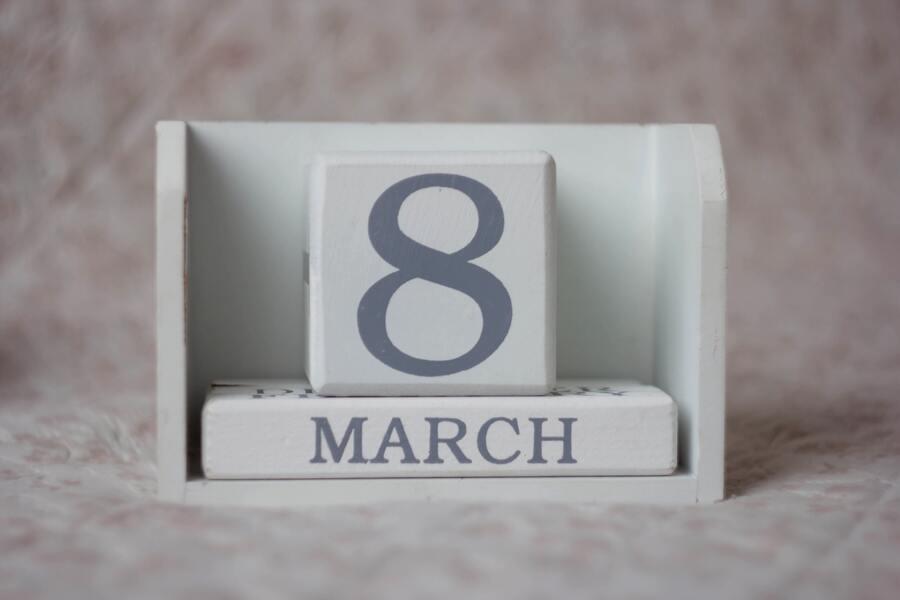
10. Calendar Math in the Classroom
What you need:
- A printable or digital calendar template
Description:
A perfect math review technique for fifth graders, calendar math is a great way to engage them in the concepts of days, weeks, months, and years. You have to display a calendar in the classroom and point out various aspects of it to the students. For example, you can ask them how many days there are in February, or how many months have 31 days, etc.
You can also use the calendar to teach place value. For instance, you can ask students to name the day on which their birthdays fall this year and write it down. Then, they can find out the day on which their birthdays will fall next year and so on.
This activity can be done with a physical calendar or a digital one. Students can use real-world objects like coins or candy to help them understand the concepts of place value, addition, and subtraction.
Skills Learned:
Days, weeks, months, years, place value, addition, subtraction
Related Reading: Ways to Make Math Fun
11. Run a Pizza Place
What you need:
- Play money
- Pizza boxes or paper plates
- Colorful cardboard pizzas
Description:
Bring fraction to life with this fun activity! Students run their own pizza place, where they take orders, make pizzas, and serve them to customers.
They can use play money to buy pizza toppings and then charge customers for their pizzas. They can also use fraction strips or circle fractions to create pizzas of different sizes.
Such math projects for students teach them concepts like halves, thirds, fourths, eighths, and more. And children will have a blast doing it!
Skills Learned:
Fractions, equivalent fractions, comparing fractions, adding and subtracting fractions
12. Hot Cocoa Project!
What you need:
- Hot cocoa stall
- Marshmallows
- Whipped cream (optional)
- Chocolate shavings (optional)
- Mugs
- Recipe book
- Play money or real money
Description:
An excellent activity for young entrepreneurs (under adult supervision), this hot cocoa project simulates a hot cocoa stand. Students can make and sell hot cocoa to their classmates, using real or play money.
They can follow a recipe to make the hot cocoa mix, and then use it to make individual cups of hot cocoa. They can also add marshmallows, whipped cream, and chocolate shavings to their hot cocoa, and charge extra for these toppings.
This activity is a great way to teach children about money, measurement, and fractions. And they’ll love getting creative with the hot cocoa mix!
Skills Learned:
Money, measurement, fractions, addition, subtraction
Advanced Math Projects for Students in Grade 5
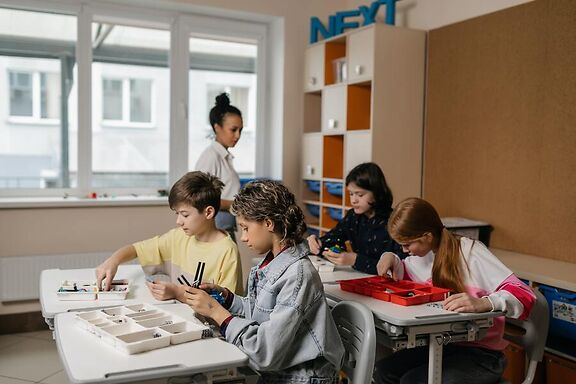
13. Performance Math Art
What you need:
- Props or costumes (optional)
- A video recording device (such as a smartphone)
Description:
Divide students into groups of 2 to 4 and ask them to prepare a performance art (dramatic poetry, song, or a skit) to explain the Order of Operations (or any other mathematical concepts, such as area and perimeter, exponents and roots, or geometry).
After they have practiced, film their final performance. Students can watch the videos to revise the concept later.
Students may also review each other’s performance in terms of delivery, clarity, and creativity to give constructive feedback.
Skills Learned:
Order of operations, area and perimeter, exponents and roots, geometry
14. Probably Probability
What you need:
- Dice
- Coins
- DIY probability tables
Description:
An inspirational idea for kinesthetic learners, this activity gets students up and about as they experiment with probability.
Provide each student with a die (or multiple dice) and a coin. Ask them to roll the die (or dice), flip the coin, and record their results in a table. They can create their probability tables.
Once they have collected enough data, they can look for patterns and predict the probability of certain events.
Skills Learned:
Probability, independent and dependent events, expected values
Related Reading: Reasons Why Math Is Important in Real Life
15. The Theme Park Project
What you need:
- Theme Park templates (for guidance)
- Construction paper
- Scissors
- Glue or tape
- String
- Markers or crayons
- Small toys (optional)
Description:
This project is perfect for a math class that is learning about geometry and measurement. Students will use their knowledge of shapes, angles, and measurements to create a mini theme park.
They can start by choosing a template (or creating their own) and then cutting out the shapes from construction paper. Once they have all the pieces, they can assemble their theme park and add details with markers or crayons.
They can also add small toys to their theme park if they wish. Finally, they can measure the area and perimeter of their creation.
Children can dream up new rides, give them outlandish names, create menus for concession stands, and research healthy and junk foods!
A lot of math happens in everyday life if we just look for it.
Skills Learned:
Geometry, measurement, area, perimeter
By working on these fun projects, students can learn and practice various math skills, from basic counting and graphing to more advanced concepts such as fractions and decimals. These math projects for students can be used to supplement your regular math curriculum or as a standalone activity. Either way, your students are sure to enjoy them!
Frequently Asked Questions (FAQs)
How can I make sure my students are engaged in the project?
Make sure to give your students a chance to be creative and have fun with the projects. For example, with the “Theme Park Project,” encourage them to develop their own designs and be as creative as possible with the details. With the “Probably Probability” project, let them experiment with different ways of collecting data and see what patterns they can find.
Do I need to prepare anything in advance?
It largely depends on the project you choose. For some projects, you may want to prepare templates in advance. For others, such as the “Probably Probability” project, you only need dice and coins.
How long should the projects take?
Again, it depends on the project. Some math projects for students require several days to complete. Others can be done in one class period or a few minutes.

















